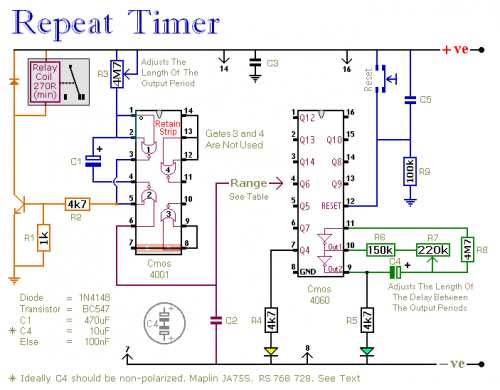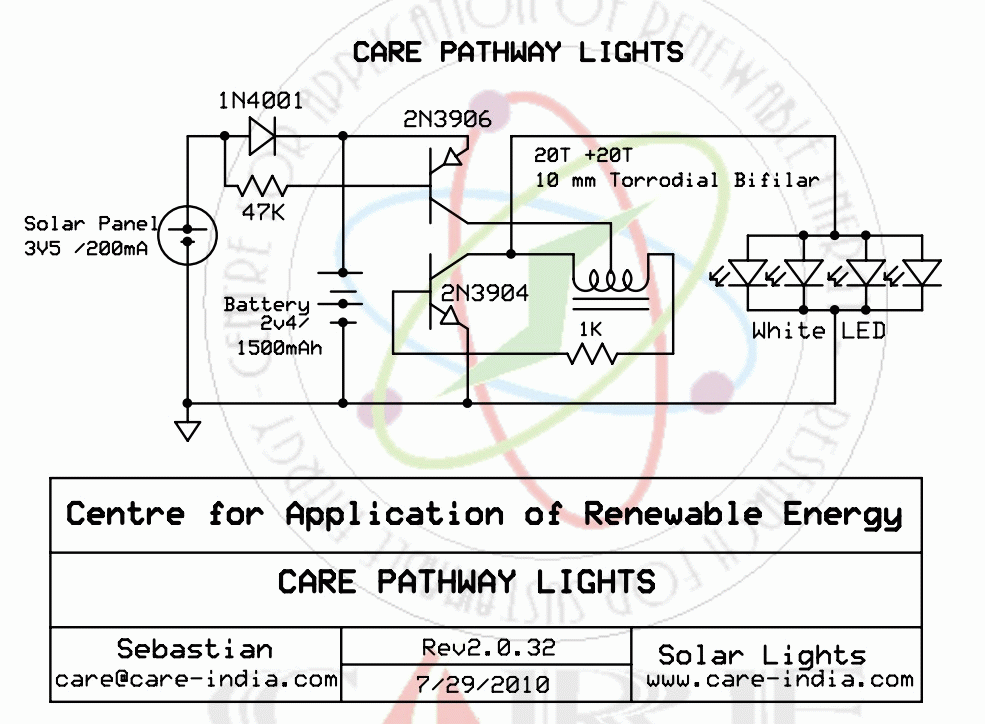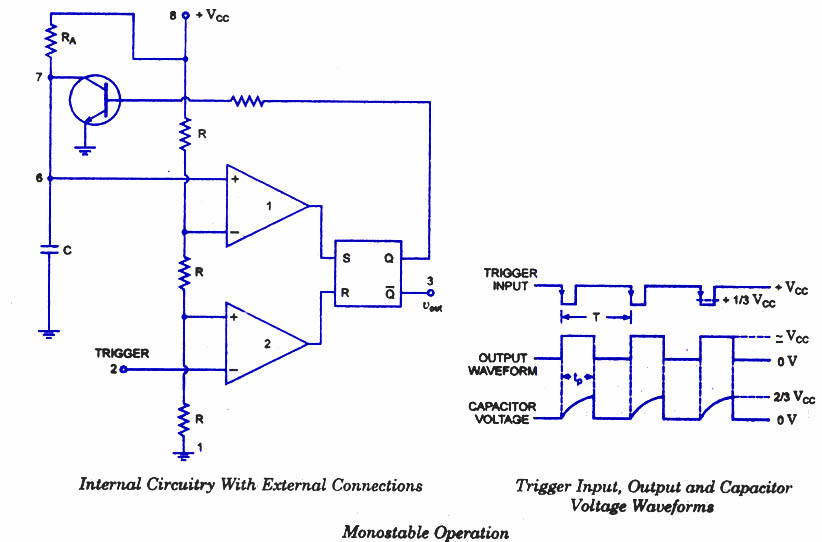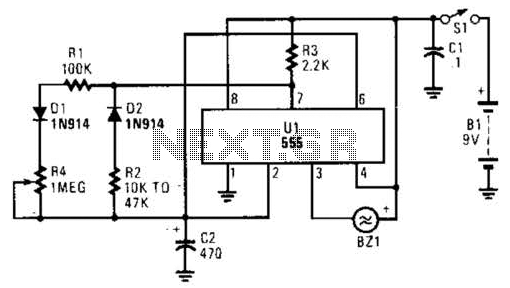
A Regularly Repeating Interval Timer

This circuit features an adjustable output timer capable of re-triggering at regular intervals. The output duration can range from a fraction of a second to half an hour or longer, with the ability to recur at intervals spanning from seconds to days and beyond.
The adjustable output timer circuit typically employs a combination of resistors, capacitors, and an integrated timer IC, such as the NE555 or a microcontroller, to achieve the desired timing functionality. The circuit's core operation is based on the charging and discharging cycles of a capacitor, which, when paired with a resistor, defines the timing intervals.
To configure the output duration, the values of the resistors and capacitors can be adjusted. The timer IC is set in either astable or monostable mode, depending on whether a continuous pulse or a single pulse is required. In astable mode, the circuit continuously oscillates, producing a square wave output, while in monostable mode, it generates a single output pulse upon triggering.
For longer timing intervals, larger capacitor values or higher resistance values are utilized. Additionally, the circuit can incorporate features such as a potentiometer to allow for fine-tuning of the timing settings. Output can be connected to various loads, such as LEDs, relays, or other electronic devices, enabling applications in automation, signaling, or timing control.
In applications where precise timing is crucial, the circuit may also include a crystal oscillator for improved accuracy, or it may be integrated into a microcontroller system for more complex timing and control capabilities. Such flexibility makes this adjustable output timer circuit suitable for a wide range of electronic projects and real-world applications.This circuit has an adjustable output timer that will re-trigger at regular intervals. The output period can be anything from a fraction of a second to half-an-hour or more - and it can be made to recur at regular intervals of anything from seconds to days and beyond 🔗 External reference
The adjustable output timer circuit typically employs a combination of resistors, capacitors, and an integrated timer IC, such as the NE555 or a microcontroller, to achieve the desired timing functionality. The circuit's core operation is based on the charging and discharging cycles of a capacitor, which, when paired with a resistor, defines the timing intervals.
To configure the output duration, the values of the resistors and capacitors can be adjusted. The timer IC is set in either astable or monostable mode, depending on whether a continuous pulse or a single pulse is required. In astable mode, the circuit continuously oscillates, producing a square wave output, while in monostable mode, it generates a single output pulse upon triggering.
For longer timing intervals, larger capacitor values or higher resistance values are utilized. Additionally, the circuit can incorporate features such as a potentiometer to allow for fine-tuning of the timing settings. Output can be connected to various loads, such as LEDs, relays, or other electronic devices, enabling applications in automation, signaling, or timing control.
In applications where precise timing is crucial, the circuit may also include a crystal oscillator for improved accuracy, or it may be integrated into a microcontroller system for more complex timing and control capabilities. Such flexibility makes this adjustable output timer circuit suitable for a wide range of electronic projects and real-world applications.This circuit has an adjustable output timer that will re-trigger at regular intervals. The output period can be anything from a fraction of a second to half-an-hour or more - and it can be made to recur at regular intervals of anything from seconds to days and beyond 🔗 External reference





